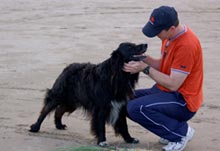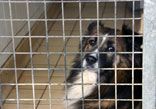What should you look for, when choosing a dog?
Choosing a dog may look easy, but it can be quite a task, especially if you are not sure of what to look for. These questions have been created to help you make the best choice.
We will break this down into two parts. First, we will look at ourselves, the potential dog owners, and second; we will look at the dogs.
The best place to start is always with you, and honesty is the key.
- What do you and your family want?
- What kind of image do you have for that dog?
- What type of environment are you living in?
- How much time for daily exercise can you accommodate?
You have to be honest with yourself about why you want to get a dog.
Any dog that lives with us humans has some type of purpose; even family dogs have their own purpose. When adopting a dog, this is one of the elements that you need to consider, what is the purpose that you will assign to this dog? This question needs to be asked of yourself first because by getting a dog you will be filling a need of some sort, the need for companionship, the need for protection, the need for a competitive teammate, the need for a service dog, etc...

What kind of lifestyle do you plan to have with your new dog? Many people go through the steps of dog adoption without having a full picture of what they really want. And then, they end up most often choosing a dog based on their heart and emotion only and not based on a wise, thought-out choice.
For example:
Say you are an active runner, dedicated to covering a long distance every day at a fast pace and you are looking for a running partner to share that passion with you, so you go to the local animal shelter, without first preparing. There, you fall in love with a beautiful little teacup Chihuahua and so you adopt her based on your emotions only. More than likely that dog will not be able to keep up with your exercise regimen, and although the first few times may seem cute or funny to you as you slow your pace and keep turning around to make sure that she is still with you, I highly doubt that you will want to spend the rest of your years together running that way.
Or say you find a very large dog that is just so goofy-looking and playful that you immediately picture him playing in the yard with your young kids and adopt him on the spot. But you didn’t prepare or plan for such a large dog and you end up with a unexpected game of yard-bowling, as your small children are no match for a playmate of that size and find themselves knocked over by the affectionate and energetic dog. Whatever purpose you plan for your dog, be honest about it. You are planning to spend years with your dog, in most cases, a lifetime, and choosing based solely on first impressions will probably end up being a mistake for all involved.
Now onto the second part of the question: choosing a dog.
What to look for and what to avoid once you are at the animal shelter. Although you can't identify all of a dog's behaviors or temperament right away (as explained on the Dog Adoption Myths page), there are certain behaviors to watch out for. We will discuss them a little, however, if this is your first dog and you are not sure about what to watch for, you can always contact a professional to join you (if possible) and help you recognize some of the symptoms and characteristics to look for in order to avoid future problems, and to make the most ideal match for you in choosing a dog.
What is important to look at is the overall behavior of each dog. If a dog is way too excited or hyper (often displayed by excessive barking) this may be a result of frustration or anxiety. Dogs that are shy and hiding are often fearful type dogs. If a dog is not interested in our presence or avoids looking at us, he may have socialization issues. Depending on the level of stress and fear, these dogs could easily develop issues with aggression or obsession.

Some of the best ways to notice some of these behaviors are to first spend some time observing the dog at the shelter. Observe his body posture and body language (look for signs of dominance, relaxation, fear or aggression, etc.). Then take him for a walk, or if that is not permitted at the shelter, you can usually visit with him instead in a designated area where he can meet the rest of the family or your friends. It would also be good, with the help of a shelter worker, to introduce the dog to another one that is not from his original kennel, just to observe how he interacts with other (unfamiliar) dogs.
For most people, the best dogs to look for are the medium-type dogs. Medium excitement, and healthy curiosity, displaying calm friendliness with a stranger (not jumping or pushing etc), and interacting well with other dogs. Again if you are not sure about how to recognize this yourself, the best way is to contact a professional to join you on your visit and help you with choosing a dog.
Now obviously many of the dogs in a shelter won’t be medium-type dogs. The sad reality is that many of them are there because of behavioral issues that were never addressed or resolved on time. It is important to keep this is mind and to understand that by adopting a dog with any of these issues, you may need to deal with the behavior modifications that come along with them. And to understand that dealing with behavior modification can take longer than basic dog training. This is why it is important to be prepared, to ask all of the questions, and to be honest with your answers when choosing a dog.
Just remember that whatever type of dog you choose, the dog adoption process is only the beginning of your life together. A life that can take a lot of work and a lot of commitment, but the rewards are priceless and life-changing, for both you and your new dog.
Return from Choosing a Dog to Dog Adoption
Return from Choosing a Dog to Training Your Dog and You

